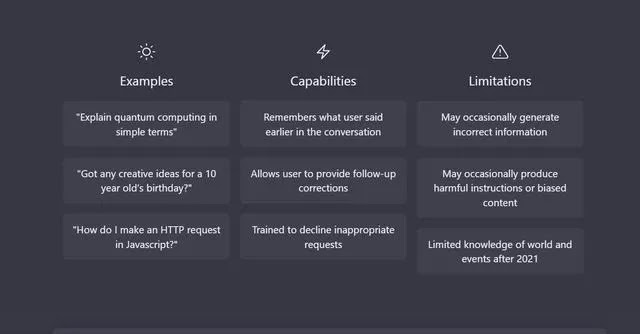ChatGPT: A Comprehensive Look at OpenAI's Advanced Language Model
- Opening
- Overview
- How to get started
- Usage
- Application
- Probrems
- Summary
Opening sentence
In an age where digital communication and
artificial intelligence are rapidly advancing, ChatGPT stands as a powerful and
versatile AI-driven language model, reshaping the way we interact with
technology.
Overview
ChatGPT, a state-of-the-art language model
developed by OpenAI, is based on the advanced GPT-4 architecture. As a
cutting-edge conversational AI, it has the ability to understand and generate
human-like responses in real-time. By leveraging vast amounts of text data from
diverse sources, ChatGPT has been trained to exhibit a deep understanding of
context, grammar, and nuances in the English language. This powerful tool has
widespread applications across various industries, making it an essential asset
for businesses and individuals alike.
How to get started
To get started with ChatGPT, visit the
official OpenAI website at https://www.openai.com. Here, you can sign
up for an account, access API documentation, and explore various subscription
plans tailored to your needs. Once you're set up, you can begin integrating
ChatGPT into your applications and workflows.
Usage
ChatGPT can be utilized for a wide range of tasks, including but not limited to:
- Customer support: Automating responses to common customer inquiries, thus saving time and resources.
- Content generation: Assisting users in drafting articles, blog posts, social media updates, and more.
- Personal assistants: Enhancing the capabilities of virtual assistants by providing human-like conversation and response generation.
- Education and tutoring: Offering assistance in various subjects, helping users understand complex concepts, and providing personalized feedback.
- Language translation: Translating text between languages with high accuracy and fluency.
- Programming assistance: Generating code snippets and offering suggestions to improve code quality.
Application
ChatGPT has been successfully implemented
in a variety of sectors, such as e-commerce, healthcare, education, and
software development. Its versatility allows it to be integrated into chatbots,
virtual assistants, content management systems, and even mobile applications.
By harnessing the power of ChatGPT, businesses can streamline their operations,
improve customer experiences, and drive innovation.
Problems
Despite its remarkable capabilities,
ChatGPT does have its limitations. Some of the main challenges include:
- Biases: The model may inadvertently reflect biases present in the training data, which can lead to biased responses.
- Inaccurate information: As the knowledge cutoff for ChatGPT is September 2021, it might not have the most up-to-date information or be able to answer questions about recent events.
- Ambiguity: The AI can sometimes provide vague or unclear responses, especially when dealing with complex or ambiguous queries.
- Ethical concerns: The potential misuse of ChatGPT in generating misleading or harmful content raises questions about its ethical implications.
Summary
ChatGPT, built on the GPT-4 architecture,
is an innovative language model that has revolutionized digital communication
by providing human-like responses and context understanding. Its wide range of
applications, from customer support to content generation, has made it an
invaluable tool for businesses and individuals. However, it is essential to
recognize and address the limitations and ethical concerns surrounding its use.
By doing so, we can ensure the responsible deployment of ChatGPT and continue
to harness its power to reshape the future of technology.



Comments
Post a Comment